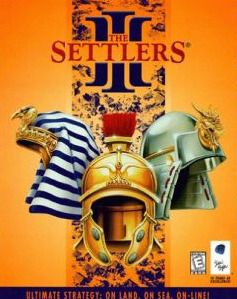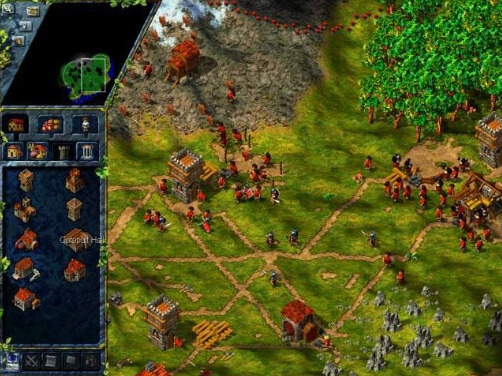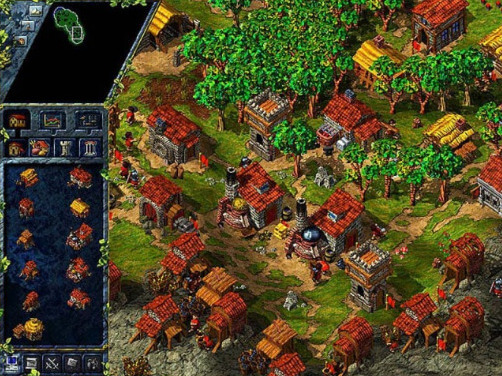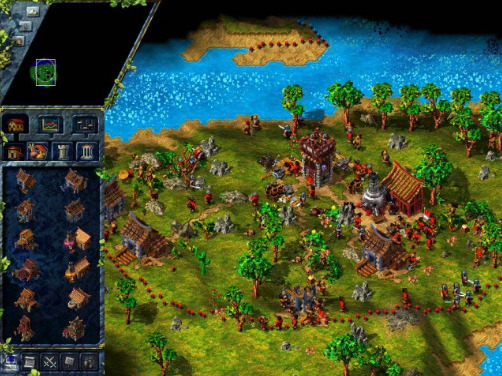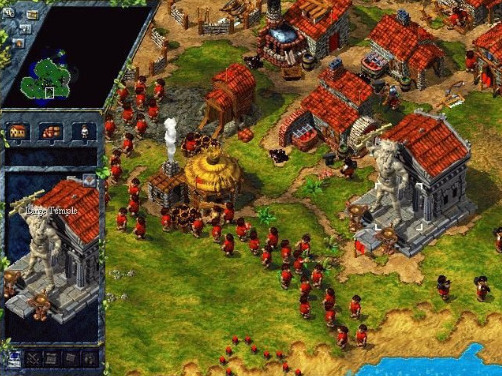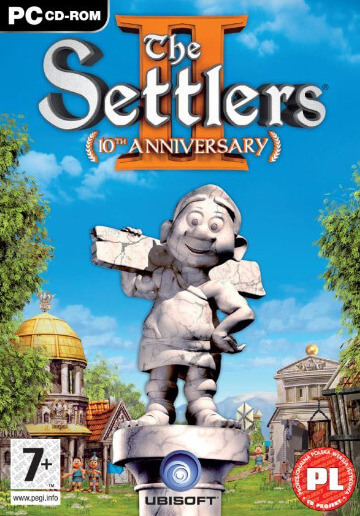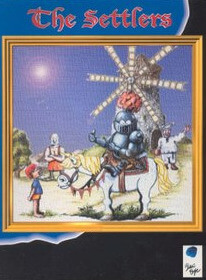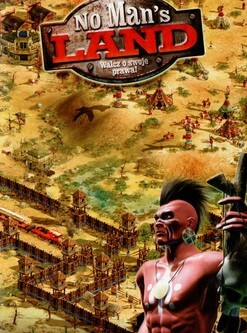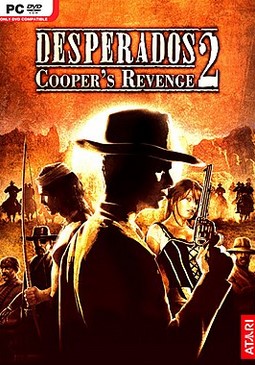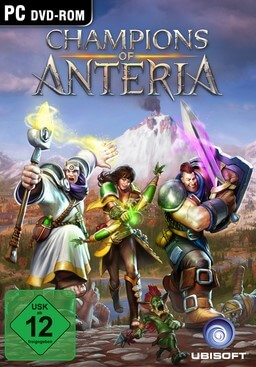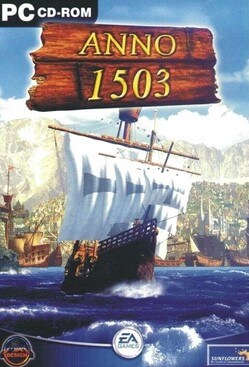The game was designed and co-programmed by Volker Wertich, creator of the original Settlers game. Having consulted fan feedback from the first two games, Wertich wanted to expand the scope of the third installment as much as possible, whilst preserving the elements which made the series unique. Although the core supply and demand-based gameplay is broadly the same as in previous titles, many of the game mechanics have been altered. For example, combat is more involved, with the player given direct control over their army; roads are no longer necessary to connect buildings, as all settlers can now walk freely around the player's territory; headquarters no longer automatically generate settlers as required, instead the player must build residences to gain new settlers; and the different races are no longer merely aesthetically differentiated, they now have different economic models, different magic spells, different war machines, and several unique abilities and buildings. The game was also the first in the series to feature online multiplayer, the addition of which had been one of the main requests from fans.
The Settlers III received mixed reviews. Although acclaimed in its native Germany, where it was heralded as the best game in the series thus far, the international reaction was more muted. Whilst the economic system and the interrelatedness of the various buildings were generally praised, and the graphics and animations especially lauded, most critics felt it was too similar to previous Settlers titles, with the changes to the mechanics seen as not enough to fully differentiate it from its predecessors. The game was a commercial success, selling over 200,000 units in Germany within the first twelve months of its release, and ultimately going on to sell over 700,000 units worldwide.
Gameplay
The Settlers III is a real-time strategy game with city-building elements, controlled via a point and click interface, in which the primary goal on most maps is to build a settlement with a functioning economy, producing sufficient military units so as to conquer rival territories, ultimately gaining control of either the entire map, or a certain predetermined section of it. To achieve this end, the player must engage in economic micromanagement, construct buildings, and generate resources.
Game modes
The game can be played in one of three modes; "Single Player: Scenario", "Multiplayer", or "Campaign". In Campaign mode, the player must complete a series of missions, the goal of most of which is to defeat the computer controlled opponent or opponents by gaining possession of their territory. In the original release of the game, there were three separate campaigns of eight missions each; one campaign each for the Romans, Egyptians, and Asians. The Mission CD expansion added three additional campaigns of eight missions for each race, and Quest of the Amazons added two campaigns of twelve missions each; one in which the player controls the Amazons against the others, and one in which they control the others against the Amazons.
In Scenario and Multiplayer modes, which can be played via a LAN or online, the player can choose from either a randomly generated or pre-built map, and then refine the game in various ways, such as adjusting the amount of raw materials available to each player at the start of the game. The player can also select the type of game to be played, choosing from "Map Defaults" (the game is played with predetermined settings, based on the specific map), "Teams" (the player can select any combination of teams and players allowing for up to twenty players) or "No Teams" (the player can choose from "League", in which players receive points at the end of the game for ranking on Blue Byte's online league table; "Free-for-All", in which each player/race competes against one another; "Free Alliance", in which players/races can ally with one another; or "Play Alone", in which there is only one player/race). Introduced in the Quest of the Amazons expansion was "Economic Mode", in which the goal is to be the first player to complete an economic based objective.
Settlers and transportation
Whether playing Campaign, Scenario or Multiplayer mode, each game begins the same way; the player has a small settlement, a set amount of raw materials and tools, and a predetermined number of settlers. The basic gameplay revolves around serfs (the titular "settlers"), who transport materials, tools and produce, and who populate and perform the requisite task of each building. In both The Settlers and The Settlers II, settlers automatically emerged from the player's headquarters as required. In The Settlers III, however, there are no headquarters, and new settlers can only be acquired by the construction of residences.
At no point does the player directly control any normal settler - instead, general orders are issued (such as ordering the construction of a building), with the AI handling the delegation of orders to specific settlers. However, the player can control specialist settlers, of which there are three types; pioneers (extend the player's territory by digging at the border), thieves (scout enemy territory and steal resources) and geologists (test mountainous ground for raw materials).
A major change to the mechanics in The Settlers III is that players do not have to construct a road network. Instead, settlers can walk freely around the player's territory, with the AI handling pathfinding. Like the previous games, however, The Settlers III has an adjustable goods priority system, which determines the order in which items are transported. Players can also build marketplaces, which allow for the establishment of trade routes between areas on the same geographical region, and shipyards, which allow for the manufacture of both transport ships (can transport specialist settlers and soldiers) and trade ships (can transport items from a landing dock to a different geographical region).
Races and economy
In the original game, the player could choose one of three races; Romans, Egyptians and Asians. Quest of the Amazons added the Amazons as a fourth race. Unlike in previous Settlers titles, each race has a slightly different economic model. For example, the Romans' and Amazons' construction industries require roughly equal amounts of wood and stone, the Egyptians' requires more stone than wood, and the Asians' more wood than stone. Each race also has specific skills; for example, only the Romans can turn wood into coal; only the Egyptians can build on desert terrain; only the Asians and Amazons can mine sulfur; and only the Amazons can build war machines which use mana rather than physical ammunition.
The economy is under the player's control throughout the game, and is adjustable in multiple ways. For example, the player can control the distribution of goods by selecting which percentage of a given resource is transported to a given building. In a similar manner, the player can select what tools are made when. Tool production is important insofar as all buildings require raw materials and a worker with the right tool. For example, if the player has built a fishery, and the building is still empty despite the presence of idle settlers, a fishing rod will need to be manufactured in the toolsmith. The game also uses a notification system that alerts the player if a building cannot be occupied either due to a lack of the right tool or the absence of available settlers.
